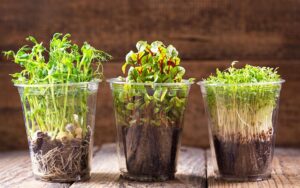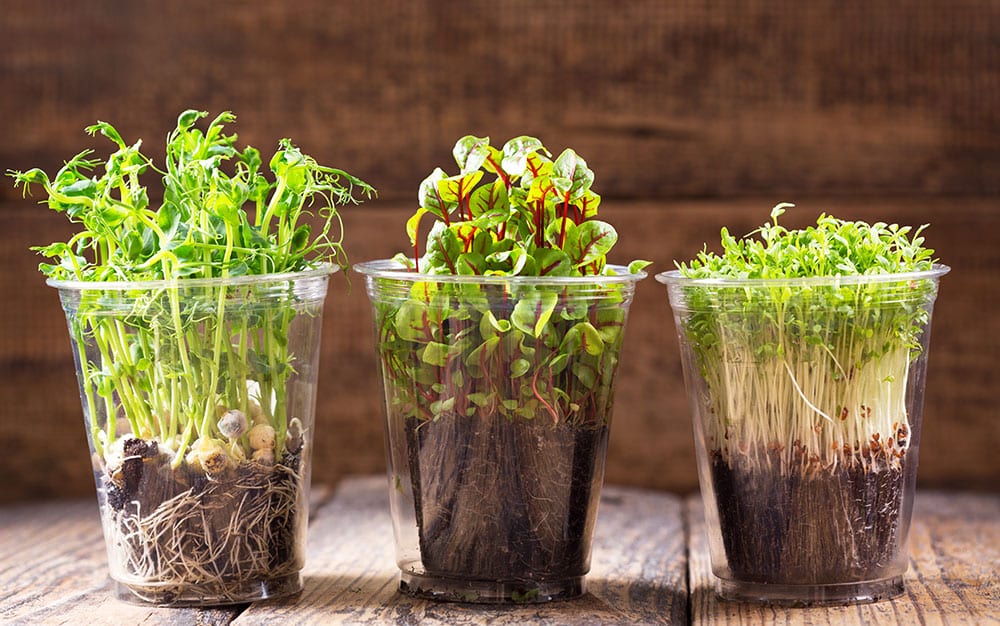
Bursting with flavor intensity, micro herbs and micro greens are relatively easy to grow on your own. Growing at home gives micro supplies for family meals.
About Micro Greens
Micro greens are dinky small vegetable seedlings that are snipped for harvest anywhere between one to three weeks after germination. Top executive chefs have used micro herbs and other micro green vegetable shoots as side salads in winter, garnishes and as intensive herbaceous flavor enhancers of salads including more mature leaves of endive, lettuce, spinach, watercress and rocket in summer.
Which Greens can be Grown Micro
Many summer outdoor green vegetables are suitable for planting indoors. The success that a backyard gardener has with Oregon sugar pod peas growing up canes outside in the summer can translate to germinating Oregon peas indoors and snipping off their pea shoots as micro greens. Growing micro greens brings all the familiar taste of a sugar pod pea but with the quick turnaround of between 8 to 14 days to snipping off the shoots and using them as an ingredient in cooking at home.
Green vegetables that are considered to have the potential to be palatable micro greens include Chinese and Oregon sugar pod peas, sunflowers, broccoli, rocket, radish, beetroot, celery, Swiss chard and red mustard, as recommended by Martyn Cox in his How to Grow Plants in Pots published in April 2011. Cox also suggests that herbs such as basil, fennel, cilantro and chervil can be micro greens.
Preparation of Container for Micro Greens and Micro Herbs
Micro greens require a shallow container, a narrow seed tray or a recycled and reused packaging with holes in the bottom. When selecting a suitable container, think small. If mustard seed or cress would grow readily and well in the container then the chances are that it will be a suitable container for growing micro greens and micro herbs in.
Plastic is the most suitable container material and vermiculite is the optimal growing medium for micro greens (Cox, 2011). Only a 2-centimeter layer of vermiculite is required in the base of the container before scattering your Oregon sugar pod peas or other micro green seed onto the growing medium. Then stand the container in a tray filled with water rather than spray water directly onto the seeds and vermiculite. Once the surface of the vermiculite is wet, remove the seed container, drain and pat dry before placing them into the growing site in your home.
Optimal Site and Growing Conditions for Micro Greens
Micro greens can happily germinate and grow in full sun. In the fall, this will become trickier, although growing micro greens in the winter should not be discounted. Protection, such as covering with a clear tray lid, and a warm temperature are important. Growing times in winter may be slower.
For best results and a good harvest, the vermiculite should not be allowed to dry out. Watering should be done by standing the container in a tray filled with water rather than watering onto the growing micro greens. Snip the shoots, when two or three leaves high, with scissors to harvest. Micro greens can be refrigerated for a couple of days.

